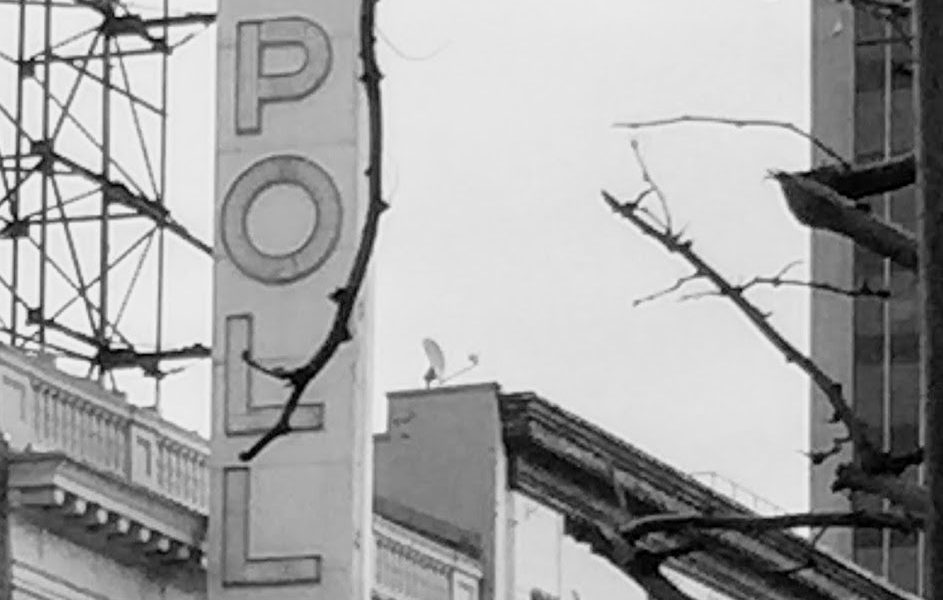Harlem Renaissance Presentation
The Harlem Renaissance:
Zora Neale Hurston, Gwendolyn Bennett, and the “New Negro”
Born from the want of a new black identity and the want for racial equality, the Harlem Renaissance was an uproar of creative expression consumed with a new wave of black intellectuals who began to express themselves through creative ways such as art, literature, and music. The Harlem Renaissance created a new identity for African-Americans, an identity that they would call the “New Negro.” The “New Negro Movement” paved the way for all types of expression from African-Americans, but one of the major impacts of the Harlem Renaissance was the literature movement. The literature movement unleashed the work of talented black authors who wrote articles, poems, and novels. Every author throughout this era brought writings that uplifted the entire black community, however, writers Zora Neale Huston and Gwendolyn Bennett brought a uniqueness to the Harlem Renaissance that separates them from their peers. Hurston and Bennett opened a dialogue for the black woman’s identity that wasn’t seen throughout much of the writing being produced at the time. For these two writers black women were at the forefront whereas for other authors (specifically males) the black and male identity were at the forefront of their writing. Hurston and Bennett create, through their literature, a space for the black woman’s identity in the “New Negro” Movement.
On January 7, 1891, Zora Neale Hurston was born in Notasulga, Alabama to John and Lucy Potts Hurston (Boyd). After moving to the little town of Eatonville, Orlando, Nora spent the next thirteen years enjoying a decent childhood with her parents and seven siblings. However, after her mother died , her life took a turn for the worst. Due to her father’s disinterest in her well being, Zora was passed on from one relative to another until finally, at the age of fourteen, she was hired as a wardrobe girl and maid by a drama troupe called “Gilbert & Sullivan.” Eventually, she arrived in Baltimore where she enrolled in Morgan Academy and then graduated in 1918 (Boyd). Over the course of the next few years, Zora attended multiple colleges, such as Howard, Barnard College, and Columbia University. While enrolled at Barnard College she had the opportunity to study anthropology with the “Father of American Anthropology,” Franz Boas. Boas awarded her the Guggenheim Fellowship and she “used the award to collect materials dealing with traditional beliefs, legends, sayings, and customs of blacks” (Bloom 47). However it was through her creativity and passion for writing that she became a person who shaped the Harlem Renaissance (“Hurston, Zora Neale”). A year after moving to New York in 1925, she, Langston Hughes, and Wallace Thurman organized the journal Fire!, which is considered one of the defining publications of the Harlem Renaissance era (“Hurston, Zora Neale”). Unfortunately, Zora died on January 28, 1960 with little money to her name (Boyd).
One of Hurston’s most well known and prominent works of literature is Their Eyes Were Watching God. In this novel, Zora tells the story of Janie Crawford, a woman who believes that she deserves to be treated fairly by those of the opposite gender. Throughout the novel, she goes through multiple marriages with men who either try to force her to be someone other than herself, or treat her like a pack mule instead of an individual. Eventually, she finds what she is looking for in her third husband, Tea Cake, a man who is younger than her but treated her in a way that no other man seemed to be capable of doing: with affection and understanding.
Hurston’s novel came shortly after the uproar of The Harlem Renaissance and during the tense years of the Great Depression, however, Their Eyes Were Watching God still held the feeling of the work written during the Harlem Renaissance era. This novel was a prime example of how black women were treated during the early 1920s. Women were not considered equal to their male counterparts and often treated as lesser beings, and they desired to have the same freedom and equality to men. The novel also gives readers a look inside the mind of a woman during the 1920s and how she wanted to be treated by men. However, most women did not know how to, or were unable to, express how they truly felt; Their Eyes Were Watching God could be considered a guide for women who try to pave the way and repudiate roles assigned to them like Janie. When this novel came out many people were against the work and Hurston herself. They criticized her for the novel saying that it wasn’t “serious”, which partially came from the suffering happening during the Great Depression which was in full force by the time the novel came out. Hurston refused to succeed to the gender roles and stereotypes given to black women, which also earned her a lot of criticism (Bloom 99). Hurston’s novel pushed against gender inequality and roles, and this is something that fellow writer Gwendolyn Bennett tried to accomplish as well.
Born in Giddings, Texas, on July 8, 1902, as a child Gwendolyn Bennett was raised on a Native American reservation. She had an aberrant childhood. After her parents divorced, her mother won custody but her father kidnapped her, eventually settling in Brooklyn (Hass). Bennett died on May 30, 1981, in Reading, Pennsylvania. Her literary contributions can be found in various anthologies, with her professional and personal papers archived by the Schomburg Center for Research in Black Culture, in New York City. Gwendolyn Bennett found success as a poet, fiction writer, and a journalist during the Harlem Renaissance (“Gwendolyn Bennett Biography”).
In one of Gwendolyn Bennett’s most famous poems, To A Dark Girl, she expressed her love for her heritage and she encourages all African-American girls to love the skin they are in:
I love you for your brownness,
And the rounded darkness of your breast,
I love you for the breaking sadness in your voice
And shadows where your wayward eyelids rest.
Something of old forgotten queens
Lurks in the lithe abandon of your walk
And something of the shackled slave
Sobs in the rhythm of your talk.
Oh, little brown girl, born for sorrow’s mate,
Keep all you have of queenliness,
Forgetting that you once were slave,
And let your full lips laugh at Fate! (Miller)
Bennett realized that the young girls of her time were subjected to hatred from outsiders. She believed that the depressing past that African-Americans had lived through during slave times had tainted the way black girls viewed themselves. In this poem, she identifies black women as being “brown.” This was done to point out that African-Americans had incorrectly been identified as being the color “black” even though their skin is indeed many shades of brown. Since the word “black” usually carries negative connotations such as evil and mystery, it is important that she addressed the young girl as brown. Even though Bennett’s poem touches on the horrible aspects of slavery and its long-lasting effect on the culture, she encourages young girls to forget their past, love themselves presently, and look forward to the happiness they will experience in the future. Like Hurston, Bennett uses her writing to uplift black girls and women. Her poem helped build the morale of African-American women. It is a great example of the message that black writers of the Harlem Renaissance wanted to push out into the world.
Literature from this time helped develop cultural expression as a whole. With help from black intellectuals such as Zora Neale Hurston and Gwendolyn Bennett (and of course male authors as well such as W.E.B Dubois, Marcus Garvey, and Claude McKay), American society was able to endorse experimentation of politics, religion, music, and written works. The Book of American Negro Poetry (1922) jumpstarted interest in enhancing the image of African-Americans by defining “The Old Negro” and “The New Negro”. The Old Negro was known as the mentality of blacks that accepted their treatment as inferior beings during and after the post-Reconstruction era. The New Negro was self-assertive, racially conscious, and articulate (Bloom 50). African-American literature, just like The Book of American Negro Poetry, served as one of the foundational pieces for the Harlem Renaissance movement and made way for self-expression and a prideful outlook on what African-Americans could do (“Harlem Literature”). Bennett and Hurston strived to take on this new identity of blacks being this“New Negro” through their writings. They did this by uplifting African-American women and giving them a voice. Though women were their focal point they still were trying to do what other black writers were trying to achieve at this time: redefine and uplift the African-American community. They wanted to redefine themselves despite the stereotypes whites tried to force on them. For the first time in history, African-Americans’ work were being published and respected.
The Harlem Renaissance was a time of originality and prosperity. As the Harlem Renaissance became more known throughout its age, literature became a prominent way blacks could express themselves. Great writers like Gwendolyn Bennett and Zora Neale Hurston, and of course many others, inspired other blacks to not only love themselves and the skin they were in, but to express their passions, whether it was through poetry, art, music, etc. Their writing served as the foundation for what was to become in America the new black identity. Instead of uneducated individuals, African-Americans were now portrayed as intelligent beings capable of producing magnificent works of art, literature, and music. In conclusion, literature during the Harlem Renaissance had a huge impact on the way individuals were able to express themselves and how they were perceived, and African-Americans have great writers like Hurston and Bennett to thank for that.
Works Cited
Bloom, Harold, ed. Zora Neale Hurston. New York: Chelsea House, 1986. Print.
Boyd, Valerie. “About Zora Neale Hurston.” The Official Website of Zora Neale Hurston. Sonnet
Media, 2013. Web. Mar. 2014.
“Gwendolyn Bennett Biography.” Bio.com. A&E Networks Television. Web. Mar. 2014.
Johnson, James Weldon. The Book of American Negro Poetry. New York: Harcourt, Brace, 1931. Print.
Haas, Theresa. “Bennett, Gwendolyn B.” Gwendolyn Bennett. Web. Mar. 2014.
“Harlem Literature.” Harlem Renaissance Multimedia Resource. Web. Mar. 2014.
“Hurston, Zora Neale.” Funk & Wagnalls New World Encyclopedia(2016): 1p. 1. Funk & Wagnalls New World Encyclopedia. Web. 18 Apr. 2016.
Hurston, Zora Neale. Their Eyes Were Watching God. New York: Perennial Library, 1990. Print.
Miller, Nina. “On ‘To a Dark Girl’”. Modern American Poetry. 1998. Web. Mar. 2014.



